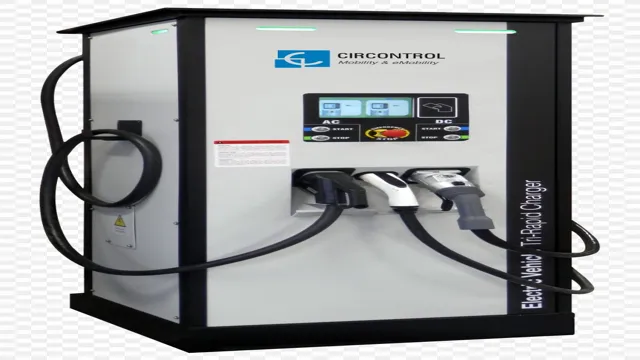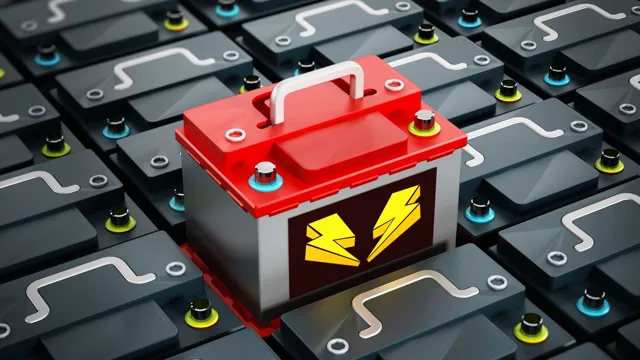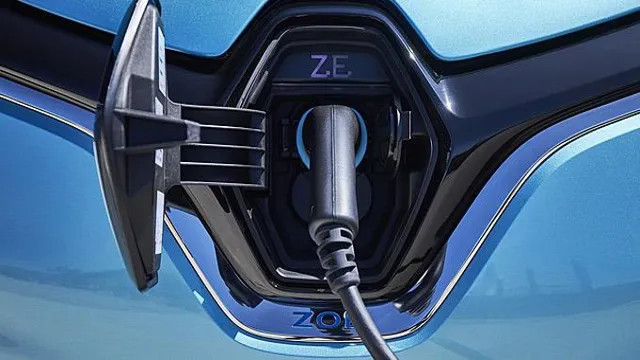Inside the Power of Electric Cars: The Revolutionary Battery Cells Driving the Future
As the world becomes increasingly dependent on technology, the way we power our vehicles is changing. Electric cars have been around for a few years now, but the market has seen a massive surge in popularity recently, and it’s not hard to see why. Battery cells are the key to powering these vehicles, but many remain hesitant to fully embrace electric cars.
Are the batteries strong enough to meet the demands of daily driving? Can they be charged quickly enough for long trips? These questions and more will be answered as we dive into the power of battery cells for electric cars. Let’s explore how these cells work, their strengths and limitations, and how they are changing the face of the automotive industry.
What Are Battery Cells?
Battery cells are the fundamental units that make up a battery. These cells are used in electric cars and provide the power needed to run the vehicle. They are designed to store electrical energy and release it when required.
The most commonly used cells in electric cars are lithium-ion batteries. These batteries are preferred as they are lightweight, have a high energy density, and provide a longer range. The number and arrangements of battery cells vary depending on the car model and the required power output.
The cells are linked together in a series or parallel configuration to achieve the desired voltage and capacity needed to power the car. In essence, battery cells are the building blocks of the battery that determines the performance and capabilities of an electric car.
Exploring Cell Types and Functionality
Battery cells are the lifeblood of our modern technology-driven world. They are the fundamental building blocks of all rechargeable batteries, from the tiny button cells used in calculators to the massive lithium-ion batteries used in electric cars. Battery cells are essentially electrochemical devices that store and convert energy in the form of chemical reactions.
They are composed of three components- a positive electrode, a negative electrode, and a separator. The separator provides a barrier between the electrodes, which allows ions to flow between them and generate electrical energy. The positive electrode is responsible for accepting electrons, while the negative electrode is responsible for releasing them.
The type and number of cells used in a battery dictate its capacity, voltage, and discharge rate. Although there are many different types of battery cells available, the most common ones are lithium-ion, nickel-cadmium, and lead-acid. Each type has its unique characteristics and applications.
For instance, lithium-ion batteries have a high energy density, making them suitable for portable electronics, while lead-acid batteries have a lower energy density but are more cost-effective and used for large-scale applications.

Benefits of Using Battery Cells in Electric Cars
Battery cells are an essential part of electric cars. They are essentially self-contained units that convert chemical energy into electrical energy. Battery cells consist of an anode, a cathode, and an electrolyte.
When energy is required, electrons flow from the anode to the cathode through the electrolyte, creating an electrical current that powers the vehicle. One of the main benefits of using battery cells in electric cars is that they are much more environmentally friendly than traditional gasoline-powered vehicles. This is because they emit zero harmful pollutants and have a smaller carbon footprint.
Another benefit is that battery cells are much cheaper to maintain than gasoline engines. Electric cars require fewer regular maintenance checks, saving time, and money. Additionally, battery cells are more reliable and have a longer lifespan than traditional engines, reducing the likelihood of vehicle breakdowns and costly repairs.
Overall, battery cells are an excellent solution for powering electric cars and are paving the way for a more sustainable future.
Battery Cell Composition
If you’re in the market for an electric car, you might be curious about the battery cells that power them. Battery cells used in electric cars are typically composed of lithium-ion, which are the most common type of rechargeable battery. These cells are made up of electrodes, an electrolyte, and a separator.
The electrodes are usually made up of a positive cathode and a negative anode, both of which contain lithium and other materials that facilitate electron flow. The electrolyte is a liquid or gel that contains metal ions and allows for the exchange of ions between the electrodes, while the separator prevents the electrodes from touching and short-circuiting the battery. All of these components work together to form a battery cell that can be charged and discharged repeatedly, providing power to the motors that drive electric cars.
As electric cars become more popular, battery technology is constantly evolving, with new materials and designs being developed to increase their efficiency, range, and durability.
Analyzing the Essential Materials Used in Battery Cells
When it comes to battery cells, understanding their composition is essential to developing better and more efficient battery technologies. The primary components of battery cells include an anode and a cathode, which are separated by an electrolyte. The anode and cathode are typically made up of metals such as copper, aluminum, and nickel.
The electrolyte is usually a liquid or gel substance that conducts ions between the anode and cathode. Additionally, the separator is another essential component that prevents contact between the anode and cathode while allowing ions to pass through. The type and combination of these materials can vary depending on the type of battery, with different materials providing different advantages and disadvantages regarding performance and longevity.
Understanding the composition of battery cells is crucial to developing the next generation of efficient and sustainable energy storage solutions.
Overview of Popular Battery Cell Brands for Electric Cars
When looking for the best battery cell brands for electric cars, it’s essential to consider the composition of the cells. Most of the popular battery cell brands use lithium-ion technology, which is currently the most efficient and widely used battery chemistry in the electric vehicle industry. Lithium-ion cells have a high energy density, which allows them to deliver maximum power while maintaining a compact size.
Popular lithium-ion battery cell brands include Panasonic, LG Chem, and Tesla. Additionally, some manufacturers are exploring new battery chemistries that offer faster charging times and longer ranges. For instance, Tesla is working on developing the solid-state battery, which could provide a range of up to 400 miles on a single charge.
Overall, it’s essential to understand the composition of battery cells when choosing the right electric car.
Impact of Battery Cell Innovation on Electric Car Efficiency
Battery cell innovation is a crucial factor in determining the efficiency of electric cars. When it comes to battery cells, there are various compositions that can be used, each with its own advantages and disadvantages. Lithium-ion (Li-ion) batteries are the most popular among electric vehicles due to their high energy density and low self-discharge rate.
Additionally, they have a long lifespan and are capable of handling frequent charging. However, their main drawback is safety concerns, as they can be flammable and explosive under certain circumstances. Solid-state batteries, on the other hand, are gaining popularity due to their higher energy density and enhanced safety features.
They also have a longer lifespan and can handle a higher rate of charge and discharge cycles. However, they are still in the development phase and more research is needed to make them commercially viable. Overall, the composition of battery cells is an important consideration in the search for more efficient and sustainable electric cars.
The Future of Battery Cells in Electric Cars
Battery cells are a crucial component of electric cars, and their development is integral to the future of the industry. While current lithium-ion batteries have been the standard for some time, researchers and manufacturers are constantly seeking new advancements. Solid-state batteries, for example, have the potential to increase energy density and improve safety.
However, these advancements will have to undergo rigorous testing and scale-up before they can be implemented on a larger scale. Additionally, recycling and sustainability efforts will become increasingly important as the number of electric cars on the road continues to grow. As battery technology continues to evolve, it will undoubtedly play a major role in shaping the future of the automotive industry.
Predictions for Advancements in Battery Cell Technology
Battery cell technology is rapidly advancing, and the future of electric cars looks very promising because of it. We can expect to see smaller and lighter battery cells with higher energy densities that will allow vehicles to travel further distances on a single charge. Additionally, the development of solid-state batteries could completely revolutionize the industry by increasing energy density even further and eliminating the risk of fire or explosion in accidents.
Another potential advancement is the use of lithium-sulfur batteries, which would offer even higher energy densities than lithium-ion batteries. However, there are still challenges to overcome in terms of improving durability and safety. Overall, advancements in battery cell technology will play a significant role in the future of transportation, making electric cars more efficient, practical, and accessible.
Examining the Potential for Increased Range and Charging Speed
Electric cars have come a long way in the past decade, but the potential for increased range and charging speed is one of the most exciting developments for the future of battery cells. Researchers are constantly working on improving the technology behind electric car batteries to make them more efficient, safer, and longer-lasting. One of the most promising advancements is the use of solid-state batteries, which have the potential to double the range of electric vehicles.
Additionally, advancements in charging infrastructure such as fast-charging stations and wireless charging technology could drastically reduce charging times. While there are still challenges to overcome such as cost and safety concerns, the potential for increased range and charging speed could make electric cars a more viable option for more people in the future.
Choosing the Right Battery Cells for Your Electric Car
If you’re considering building an electric car, one of the most crucial decisions you’ll need to make is which battery cells to use. The type of battery cells used in electric cars can have a significant impact on the range, reliability, and overall performance of the vehicle. Lithium-ion batteries are the most common type of battery used in electric cars due to their high energy density, relatively low cost, and long lifespan.
However, not all lithium-ion batteries are created equal, and it’s essential to choose the right type of cell for your specific needs. Factors such as the capacity, discharge rate, and temperature range should all be considered when selecting battery cells for your electric car, as these will determine the range and durability of your vehicle. By doing your research and choosing the right battery cells, you can ensure that your electric car is efficient, reliable, and able to meet your performance needs.
Conclusion
In conclusion, the battery cells used in electric cars are like the heart of the vehicle, providing the energy for it to beat and move forward. Just like a heart needs to be healthy and strong to power a body, so do the battery cells need to be designed and crafted to be durable and long-lasting to power an electric car. So, if you’re a fan of these eco-friendly cars, remember to give the battery cells some love and care, because they truly are what keeps the wheels turning!”
FAQs
What type of battery cells are typically used in electric cars?
Lithium-ion battery cells are the most commonly used in electric cars due to their high energy density and long lifespan.
Can electric car batteries be recycled?
Yes, many components of electric car batteries, including the battery cells, can be recycled, reducing environmental impact and contributing to a more sustainable future.
How long do electric car batteries typically last?
The lifespan of electric car batteries varies depending on the model and usage, but most are designed to last at least 8-10 years.
How do electric car batteries differ from traditional car batteries?
Electric car batteries are much larger and more complex than traditional car batteries, with multiple cells working together to provide power to the vehicle’s electric motor. They also require specialized charging equipment and often have a much longer lifespan.





